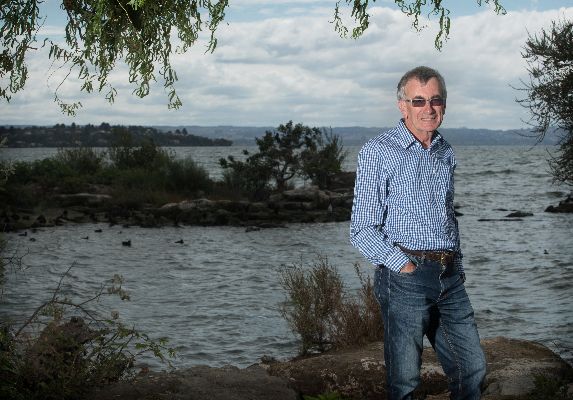
Twelve of Rotorua’s lakes failed a key water quality test in 2018/19, but the regional council says they are currently safe to swim in.
The yearly update on the lakes’ trophic levels was reported in the Bay of Plenty Regional Council’s 2018/19 Annual Report.
It found of the 12 lakes under the regional council’s purview, all failed to meet target trophic level indexes in 2018/19.
The trophic level index was a way of measuring the health of lakes in New Zealand.
It measures nitrogen, phosphorous, water clarity, and chlorophyll-a in lakes, resulting in a number grading.
Lakes Ōkaro and Rotoehu were super-trophic, meaning they scored highly on the trophic level index.
Oligotrophic lakes scored low on the test with clear blue water, while super- or hypertrophic lakes, often green and murky, were usually considered of poor suitability for recreational use.
A high trophic level tended to increase the risk of an algal bloom.
Lake Tarawera was in “poor condition” according to the report, but its trophic level index score was expected to reduce.
Rotokakahi was in a moderate condition, alongside Rerewhakaaitu, Okataina and Tikitapu.
Lake Rotoma was sitting slightly above its trophic level index.
The report said Lake Rotorua’s three-year rolling average achieved the trophic level index target but its 2018/19 result did not. Generally, it was showing stable trophic level index results, and alum dosing was ongoing.
Alum dosing was a chemical process which improved water clarity.
Rotoiti and Okareka were in “good” and “reasonable” conditions, respectively.
Lakes Water Quality Society president John Gifford said most of the lakes had tended to “slip back a little bit” but some had improved, and a poor performance one year didn’t necessarily indicate “broad-scale deterioration”.
“We want them to be closer to the target but we realise there are some limitations to achieving that. There’s always more to be done.”
Rotorua Lakes Community Board chairman Phill Thomass [crct] said the improvement of lake water quality was a “long battle to get them back to where they used to be”.
While failing to reach the targets was “concerning” to him, it was “more [about] the trends than individual years”.
He believed many people in the early 2000s had not expected the water quality to improve in their lifetimes, but it had “come more quickly than expected”.
“There’s been some unexpected advances … especially in Lake Rotorua.”
On Monday, regional council science manager Rob Donald said there were “currently no health warnings” on any of the Rotorua Te Arawa lakes and 13 sites were monitored to check for blue-green algae.
They were on Lake Rotorua, Lake Rotoiti, Lake Rotoehu and Lake Ōkaro. Lake Tarawera was monitored occasionally.
Those sites were selected because they had bloomed in the past and because they were recreational hotspots.
The monitoring was undertaken fortnightly over summer and reported on the RotoruaLakes.co.nz website.
Donald said water quality management was a “long-term game” and it was a priority for the council.
“The challenges we are facing with lake water quality have taken many decades to develop and will take decades to fix.
“The real impact of our decisions and our actions are likely to be seen in the generations to come.”
The council’s Lakes Programme worked alongside the Rotorua Lakes Council and Te Arawa Lakes Trust with support from the Ministry of the Environment to improve water quality.
Donald said the key to lasting improvement in water quality depended on land use change and the impact of that would take time to “flow through”.
“For example, if we change to low nutrient land uses in the upper catchment of Lake Rotorua, it will take between 30 and 50 years to see the improved water quality results in the lake.”
The regional council was working with landowners to help them make the changes needed, he said.
There had also been “advances” in the health of the lakes through “short to medium term interventions”, such as the Ohau Diversion Wall in 2008, which had “significantly improved” the health of Lake Rotoiti by diverting nutrient flows.



 Ramzy Baroud: The Gaza Genocide - The Fall Of Israel’s Immunity
Ramzy Baroud: The Gaza Genocide - The Fall Of Israel’s Immunity Gordon Campbell: On The History Of Doo Wop Music
Gordon Campbell: On The History Of Doo Wop Music Ian Powell: When Politics Gets In The Pocket Of The Gun Lobby
Ian Powell: When Politics Gets In The Pocket Of The Gun Lobby Binoy Kampmark: AUKUS - Flawed And Sinking
Binoy Kampmark: AUKUS - Flawed And Sinking Martin LeFevre - Meditations: The Darkest Hour Before Dawn Or The Sum Of All Dark Ages?
Martin LeFevre - Meditations: The Darkest Hour Before Dawn Or The Sum Of All Dark Ages? Gordon Campbell: On Justin Trudeau’s Demise, In A Global Context
Gordon Campbell: On Justin Trudeau’s Demise, In A Global Context